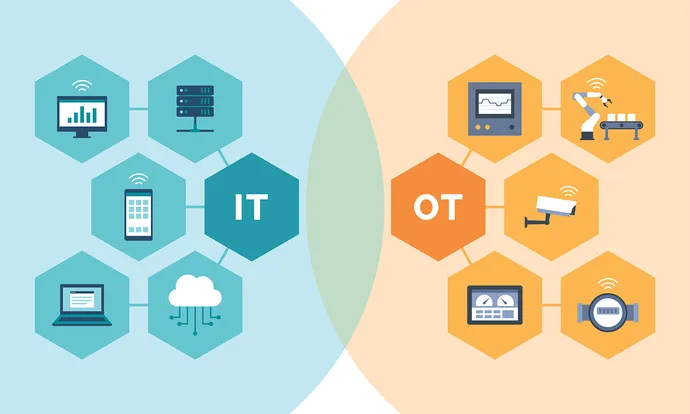The Future Of The Metaverse Is MultiChain - But Its Users Must Be Unchained

It’s an extremely unrealistic scenario that will probably never happen. Every
time a shiny new blockchain platform for the metaverse arrives, loaded with
promise, it leads to the arrival of new flaws and problems that must be
overcome. New chains are made to solve these new issues, and yet more problems
arise. And so the cycle of innovation goes on and on. These new blockchains do
offer some interesting solutions and benefits, hence they become fertile
breeding grounds for numerous developers to experiment with new metaverse
projects and decentralized applications. That fuels greater interest in the
metaverse, prodding users to further explore the world of Web3 and the multitude
of other blockchains that support it. Different chains have different strengths
and play host to different metaverse worlds, and users soon understand the need
to be able to move across these networks. Mobility across chains is a must, as
it is the only thing that enables true metaverse freedom. At present, so-called
blockchain bridges are the go-to mechanism for moving digital assets across
chains.
3 Reasons the Cloud is Critical for Ensuring Patient-Centered Care
One of the keys to delivering patient-centered care is gaining a full
understanding of the individual and actively engaging them in their outcomes.
But for this to become a reality, patients and their providers need access to
medical records and open lines of communication matched to patient preferences.
The cloud enables centralized access to patient records, giving healthcare
providers a full view of the tests, diagnoses, treatments and other patient
information. The addition of artificial intelligence (AI) in cloud-based
solutions is enhancing care by analyzing vast amounts of patient data and
offering insights that aid in clinical decision-making, which can result in
faster time-to-treatment and better outcomes. ... In the past, connecting with
physicians outside of appointments often turned into a game of phone tag and
resulted in multiple voicemails. But with the cloud supporting patient portals,
video chat and text messaging, patients and their providers have more ways to
communicate. They can quickly exchange information or ask and answer questions
electronically at their convenience, and refer back to those messages should
they forget something.
Nearly Half Of CIOs Say Digital Transformations Are Incomplete

In the fully digital era, when employees have the flexibility to work from
anywhere, eliminating data silos will be key to improving organization-wide
collaboration. Part of the challenge is completely digitizing an organization’s
documents and workflows. The other piece is creating a central repository for
digital data – one that’s universally accessible to and shared by multiple teams
within an organization. According to a recent study by S&P Global Market
Intelligence, only 17% of those surveyed said that their organizations had a
single source of truth where everyone could access the knowledge they created.
If businesses want to realize the benefits that come with fully digital
processes, there’s still more work to do. Investing in full digitization,
including a unified document system, will make the most of an organization’s
data while significantly reducing costs and enhancing collaboration, improving
interactions between team members wherever they may be located.
Coding is Dead, Long Live Programming!

No-code platforms usually target industry-specific functions, with their primary
audience being non-technical users who wish to optimise their business
operations. Low-code platforms, on the other hand, typically target developers
who are operating under a time constraint. They are used to deliver applications
quickly and conserve resources which can be better utilised to create something
that has more impact on the organisation’s bottom line. Since no-code platforms
usually target a line of business users, who look to create applications that
can be used to expedite their business operations, they provide a host of
benefits. Not only do these platforms open up access to creating code-based
solutions to non-codes, the feature-rich nature of modern no-code environments
allow developers to solve problems unique to their line of work. In addition to
this, no-code platforms can also be used to automate workflows, thereby saving
more resources. As with any upcoming market, there are challenges associated
with no-code and low-code platforms.
How can business prepare for changes in data legislation?

The role of the Data Protection Office (DPO) is also likely to change, as rules
for smaller organisations in particular are loosened as the government tries to
create some advantages of Brexit for smaller business which economic data
suggests are somewhat thin on the ground right now. The panel all expressed
concerns about how DPOs will potentially be replaced with Senior Responsible
Individuals (SRIs) who will have the seniority but not necessarily the in depth
knowledge necessary for the role. Patrick Burgess, Co-Founder & technical
Director of MSP Nutborne Ltd. commented: "Already in the non-enterprise world
you often find people are nominated as DPO and they aren't necessarily trained.
That person needs to be supported at the highest level or it really is just a
box ticking exercise. You have to give people the right powers, responsibilities
and training and not get cross when they tell you what you don't want to hear."
None of these issues are necessarily going to be resolved by swapping out SRI's
for DPOs, although they are, as Kon pointed out, theoretically harder to fire if
they sit at board level.
DeveloperWeek Enterprise: Sorting Out Big Data to Empower AI

“In many cases, big data is a big data swamp,” he said in his presentation, “The
Big Data Delusion - How to Identify the Right Data to Power AI Systems.” The
problem, he said, comes from traditional analytical systems and approaches being
applied to outsized amounts of data. For example, an unnamed fintech company
that was a customer of EastBanc had huge datasets of its customer data,
transactional data, and behavioral data that was cleaned by one team then
transferred to another team that enhanced the data. While such an approach may
be sufficient, Shilo said it can also slow things down. The fintech company, he
said, wanted a way to use its data to predict which of its customers would be
receptive to contact. The trouble was it seemed to be a herculean task under
traditional processes. “Their current team looked at the task and estimated the
effort would take four, five months to complete,” Shilo said. “That’s a lot of
time.”
Trends in data centre sustainability

Finch is perplexed by the sudden attention paid to data centre sustainability,
given that it’s always been embedded in the DNA of Kao Data, which operates
three sites in outer London. Says Finch: “We have always tried to do things in a
sustainable manner. It’s as if everybody’s just woken up and smell the coffee.
Sustainability has always been in the foundations of Kao Data at its very core.”
Sustainability goes hand in hand with reliability, he says. You are not such a
hostage to yoyoing energy prices if you use renewables. Also, sustainability
reduces both short-term capital expenditure and long-term operational
expenditure. Finch says: “Really you end up ticking all the boxes, and it makes
complete economic sense to do things in a sustainable manner.” Data centres need
to have backup diesel generators in the event of power network outage. Many data
centres handle critical Government infrastructure, such as the NHS. One data
centre handles Government communications with the nuclear submarine fleet – and
infrastructure doesn’t come more critical than that.
Microsoft: Popular IoT SDKs Leave Critical Infrastructure Wide Open to Cyberattack

It took some digging to identify that the Boa servers were the ultimate culprit
in the Indian energy-sector attacks, the researchers said. First they noticed
that the servers were running on the IP addresses on the list of indicators of
compromise (IoCs) published by Recorded Future at the time of the release of the
initial report last April, and also that the electrical grid attack targeted
exposed IoT devices running Boa, they said. Moreover, half of the IP addresses
returned suspicious HTTP response headers, which might be associated with the
active deployment of the malicious tool that Recorded Future identified was used
in the attack, the researchers noted. Further investigation of the headers
indicated that more than 10% of all active IP addresses returning the headers
were related to critical industries — including the petroleum industry and
associated fleet services — with many of the IP addresses assigned to IoT
devices with unpatched critical vulnerabilities. This highlighted "an accessible
attack vector for malware operators," according to Microsoft.
India drafts new privacy bill for transfer of personal data internationally

"Cross-border interactions are a defining characteristic of today’s
interconnected world," according to an explanatory note from the government
accompanying the bill. "Recognising this, it has been provided in the bill that
personal data may be transferred to certain notified countries and territories."
... “The Central Government may, after an assessment of such factors as it may
consider necessary, notify such countries or territories outside India to which
a Data Fiduciary may transfer personal data, in accordance with such terms and
conditions as may be specified,” according to the draft. A data fiduciary,
according to the draft, could be any person or a group of persons who determines
the purpose and means of processing personal data. The draft Digital Personal
Data Protection Bill, for which the ministry of electronics and information
technology has invited feedback from the public via a portal till December 17,
also lays out the exemptions and conditions that must be considered when
considering the transfer of personal data to other nations.
Examining low-code/no-code popularity across Africa and its range of disruption for CIOs

Dagadu appreciates he could do without a developer to use these tools even
though he initially used one, which incurred a lot of cost. “At first we had to
employ a web developer who did a lot of work, but it looks horrible using
technology like Square Space,” he says. “In Africa, development costs are very
high and can only be tackled by companies with a lot of funding. But with the
growth of low-code/no-code, more people with bright ideas can bring them to life
without the need for expensive developers.” He noted that because of the
popularity problem in Africa of these tools, people believe that every time they
have an idea to implement an application or technology, they have to resort to
an application developer. But by coding less or not at all, there’s an easier
entry into hard code according to WenakLabs’ Assani. “It’s a way to be visible
quickly, to offer your services to the world without resorting to the skills of
a developer. Above all, you learn through experimentation.”
Quote for the day:
"And how does one lead? We lead by
doing; we lead by being." -- Bryant McGill
No comments:
Post a Comment